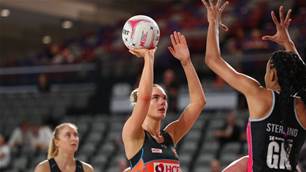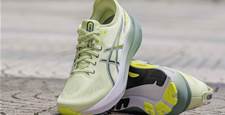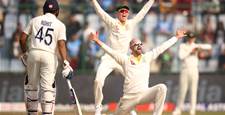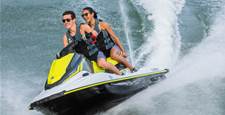Triathlon is a sport in (ahem) transition at the moment. After making its initial big splash back in the Nineties, featuring its Olympic debut in Sydney in 2000, the sport has morphed.
 Photos courtesy Red Bull
Photos courtesy Red BullTriathlon is a sport in (ahem) transition at the moment. After making its initial big splash back in the Nineties, featuring its Olympic debut in Sydney in 2000, the sport has morphed.
Whereas once Australia churned out a virtual production line of multiple world champions over various distances (Greg Welch, Brad Beven, Michellie Jones, Emma Carney, Loretta Harrop, Emma Snowsill et al), in recent years those Aussie world champs have only come from the men at the ironman distance (Craig Alexander, Chris McCormack, Pete Jacobs). Yes, the sport grabs our attention during the Olympics and Comm Games, but this is a far cry from the days when these stars occupied our TVs for hours at a stretch on summer weekends.
Which only seems to make life MORE interesting for Courtney Atkinson. He arrived in the sport in the late Nineties as the world-beating junior with huge tickets attached, and set about confirming his potential. He has represented his country at two Olympic Games, and been our Triathlete of the Year four times. At 33, he is one of the most respected and well-liked athletes in the country. But he too has sniffed the wind, weighed his future ... and this year leaves the Olympic distance ranks and goes long. Veeeerrrry long. Ironman long. Here’s how he plans to do it.
BEGINNINGS
“Like a lot of athletes raised on the Gold Coast, I grew up as a swimmer, joining the local Nippers.
I then went to one of the GPS schools here, TSS [The Southport School]. They were heavily into cross-country. I never knew I could run until I went there, but suddenly I was more of a runner than a swimmer. It all tied into triathlon really well.
“But I grew up in a different sport to what we know now. I didn’t know what existed internationally, but I knew what we saw on TV every summer, through the Grand Prix series.
My hero was Brad Beven – my sole aim was to emulate what he did.
“I finished high school in 1996. I like to say I never had to work at Maccas because I was literally out racing on weekends and already earning my pocket money through the sport. When I left school, it was at the time when triathlon was on TV pretty much week-in, week-out. We had the St George series and then the Accenture series on Channel Ten. Now it’s very different; the only time youngsters get to see us compete on TV is at the Olympic Games. And to make the Olympics, we’ve got to live and train and race in Europe most of the year.
“Triathlon has been amazing to me as a profession, but those Grand Prix days are by far my fondest memories. I began by doing what I wanted to do, then I’ve had the opportunity to go to the Olympics a few times, and now the sport is still giving to me. But the landscape has definitely changed.”
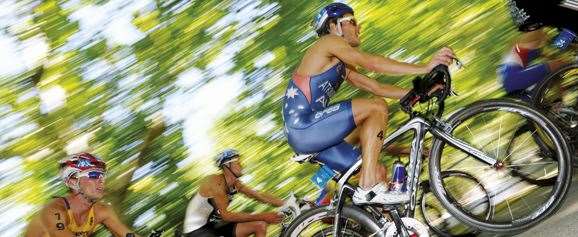 Atkinson has won numerous World Cup races over the Olympic distance in his career. Photos courtesy Red Bull
Atkinson has won numerous World Cup races over the Olympic distance in his career. Photos courtesy Red BullNEW HORIZONS
“There are so many opportunities in the sport, it’s hard to concentrate on one thing. But with ironman going so well, and Australians doing so well in it, I’ve decided that’s my new challenge. I love endurance sports, I love getting up and training every day, and now I can turn around and say, ‘I’ve still got challenges in this sport.’ And that’s where I sit today, looking at the longer-distance races.
“I’ve been over a decade travelling the world doing Olympic-distance racing, and I’ve been quite successful and have enjoyed it, but it’s just time now where I’m looking for new challenges, and the next step in our sport is long distance. I’m not naive: I know it’s a very different side of the sport to what I’ve made my bread and butter at, so I’m not going to jump straight into the deep end. Initially it’ll be half-ironman.
“But there’s this fascination: I’ve always raced short and fast and hard. The gun goes and we just go as hard as we can for whatever distance the race entails – with that mentality.
“To me, there’s been this kind of stigma with the ironman that it’s not really racing, it’s survival. You’ve got to change your whole mentality. It’s a whole different ball game.”
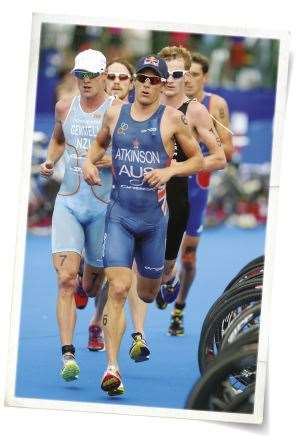 THE YEAR AHEAD
THE YEAR AHEAD
“All my ironman racing for 2013 is scheduled for the back half of the season. I have to be very conscious of not moving too fast – I’m very conscious of taking my time, because where I want to peak is the world half-ironman championship in Vegas in early September. I actually believe this distance will suit me better than the Olympic distance ever did.
“What I’ve also got super-interested in is off-road triathlon. It’s like a new hobby for me. There’s a world championship in Maui in Hawaii in October called Xterra, which attracts some of the world’s best triathletes and professional off-road racers. I’m actually going to start my season with the Australian Xterra race down in Anglesea [Victoria] this month [April 7]. The reason I’ve done it is to slow myself down initially and not overdo the training for half-ironman. And getting off-road on the mountain bike has been a whole new thrill. I still get on my road bike and it’s still great training, and it’s working towards my main focus of the half-ironman, but the mountain bike is something different, something new.
“I didn’t start off great: last year after going to the Olympics, I signed up to do the Mark Webber adventure race, over five days down in Tassie. The first thing I did in training was break my wrist. I went straight over a big log pile. But I still went down and competed with a cast on my arm.
“I still love endurance exercise, and still love getting on my road bike, but it’s just got that extra element of adrenalin to it. It’s just right for me at the moment – it’s keeping me occupied and it’s helping me with my goals. But once I do this Xterra race, I’ll put that mountain bike away and go full steam ahead right through to the middle of the year doing half-ironman races.”
OFFSEASON
“When I first started competing, we raced year-round, but we actually have an off-season now. I think it became a necessity. When I first started in triathlon racing, guys like Greg Welch and Mark Allen could win the Hawaiian Ironman, then come back here and race over the sprint distances during summer with all our best guys. But it has become a lot more specialised since the sport came into the Olympics [in 2000]. And the ironman is now definitely its own thing. The way the Olympics has evolved, it’s created the need for us to have an offseason down here in Australia in summer – you just can’t compete all year around any more if you want to be at the top of your game.”
NEW REGIME
“Actually, not all that much has changed in my training schedule so far. The volume of training we did for the Olympic distance doesn’t have to be increased all that much for half-ironman. [For full ironman, it will be a more significant change.] For me, it’s actually a nice change because I don’t have to train at the intensity I used to. When you’re training for the Olympic distance, not only do you need the endurance and aerobic stamina to get through, you’ve also got to be training all these other systems so you can handle the crit riding on the bike and the pure pace of the running – you know, we’re doing track paces on the run. And because the start in the swim is so important in Olympic distance now, you also } have to become a sprinter at swimming. So you’re training so many energy systems; it’s very taxing.
“In half-ironman, it’s non-drafting on the bike, so it’s a lot more evenly paced. Things are more structured around aerobic training, which I won’t say is easier or harder, but you just don’t have to train as many facets – you can just go out and concentrate on simpler ideas.
“Just training now in the preseason, I can already feel my body thanking me. I don’t have to think that in another few months I’m going to have to be running a sub-30-minute 10km pace. I can just concentrate on the foundation of building endurance, and the jump from that pace to the race isn’t as great as what you’d have to jump up to do an Olympic distance race. I think as you get older it’s that speed work that really taxes you, so to be able to drop some of that type of training has made a huge difference to me. I’m a lot happier and more relaxed, believe me!”
NUMBERS GAME
“Early in the season I opt for a four-day on and one-day easy day cycle. I purposefully take the extra easier days to make sure the body is ticking along nicely and to make sure I don’t overdo it. When I go into the season I will go more into a traditional six-day on, one-day off cycle.
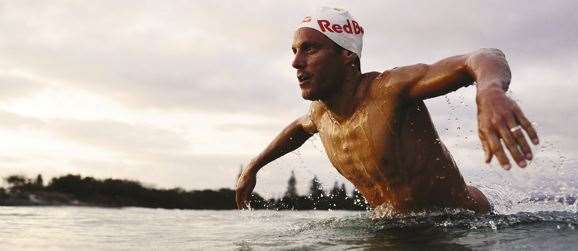 Photos courtesy Red Bull
Photos courtesy Red Bull“With half-ironman there’s obviously more focus on the bike leg. You’re spending half the race on your bike, so I kind of divvy up my week as I would a race. So you’ll spend roughly a quarter running, a quarter swimming, and half on the bike. With that extra focus on the bike, I’ll spend anywhere between 300 and 400km a week riding. I’m still swimming what I would in Olympic distance – up around 20km a week – but without the intensity. And on the run it can vary between 80km to 100km a week. The one change in my running is volume – funnily enough, my volume has actually dropped off a bit, just because running speed is so important over Olympic distance.”
DOWN THE HATCH
“I’ve never been the strictest with my diet. I figure with the amount of exercise I do, I can afford to have my every-so-often tendencies. My real bad habit is biscuits. And because I’ve got kids, the Zooper Dooper icy poles. At night. It’s probably the worst time you could have them, but that’s when I get a craving for them. This time of year it’s not a big problem, but when it’s racing season and I’m trying to race at a certain weight, I’ll have to watch it.
“My rule is to just eat generally healthy food. For me the most important aspect of nutrition is recovery. I make sure that every time I train, I have processes in place so that within 15 minutes of finishing I’ll always have the correct nutrition. Especially getting off the bike. I drink smoothies a lot. They’re made of milk, fruit and some protein powder. Because I do a lot of training out in the state forest at Nerang, I have a camping esky in the back of the car, and I’ll have that stocked with all my food requirements all the time. I’ll have water, Red Bull and my recovery shakes all there. But getting that food down within 15 minutes of finishing a training session is the most important nutritional aspect of my day.”
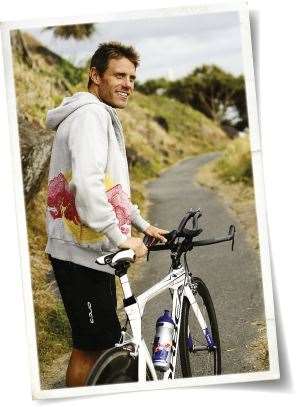 ADVISORS
ADVISORS
“Early in my career I went through a lot of coaches. I credit Col Stewart, Miles Stewart’s father, with a lot of my success in the sport. When I first went across to his squad to train, I really saw what I had to do as a professional to make it in triathlon. The beauty of training with the Australian team is that we’ve had the best triathlon coaches in the world – Col, Brett Sutton, Craig Walton. Over the past eight years I’ve worked very closely with the AIS people; we’ve used their sports science facilities every day. We used power meters on the bike, GPS for speeds, heart rates, we do regular lactate testing to know we’re training in the correct zones. I’ve always utilised the AIS to bounce ideas off. But I like to do the day-to-day training by myself now.
“Now I wake up every day re-energised. It’s like going to a new job – like getting a promotion, in a sense. One of the big changes is that I’ve had to take a lot more of the onus back on myself. When you travel around the world doing the ITU series aiming to go to the Olympic Games, you’re part
of the Australian team set-up. Now that I’m back on what is pretty much the full-professional
side of the sport, the onus is right on me. If I want to try out new sports science techniques, I have
to find them myself. If I need some technical information on bikes, I have to go out and find what I need from Orbea. If we want to do a wind tunnel test, we have to organise it ourselves. So that’s a big change.”
UP HERE FOR THINKING
“The beauty of triathlon, which I think attracts so many people to it, is the jigsaw puzzle of putting three sports together. You can race one day, and you might’ve been running the best you ever have in training, and yet you have the worst run you’ve ever had in your life. So you sit back and you think,
‘What was wrong with my run?’ But it’s probably something to do with your swim and the bike before you even got to the run.
“That’s what I think gets a lot of us up every day: how does that jigsaw puzzle fit together to get the best result? And there’s a million ways you can skin that cat, and it changes depending on your age, from year to year, injury ... And that’s why the sport is continually evolving.
“I think a lot of average people are attracted to the sport for the same reason as professional athletes: if someone gets up and doesn’t feel like riding their bike that day because it’s raining, they can go down to the pool and have
a swim. If they have a run injury, they can still keep swimming and riding until it gets right ... It’s a very healthy sport for the general population.
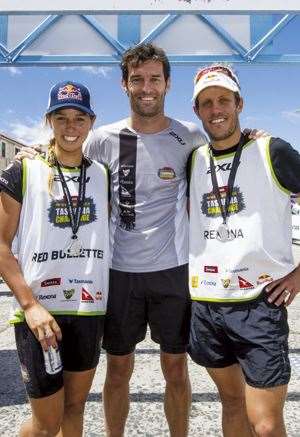 Competing in the Mark Webber Challenge.
Competing in the Mark Webber Challenge.Photos courtesy Red Bull
“I really hope that in the future, once I finish focusing on competition, I can get involved in that side of the sport – just getting its message out there. We’ve got this great sport that’s good for your everyday person. I’d love to help and mentor our youngsters.”
FAMILY FIRST
“I’m a father now – I have two kids. My daughter is six. She’s grown up on the road with me. Probably the best thing I’ve got out of triathlon is the fact that I got to spend day-in, day-out with my kids. I’m in and out of the house training, of course, but still getting all that time with my family, my wife included. We’re a real team when we’re out there on the road. But I’ve now got a one-year-old son, and he won’t quite get to do the travelling that my daughter did. It’s definitely a harder situation, having the two children, and that’s got a bit to do with the changes I’m making.
“People have sometimes questioned the path I’ve chosen through triathlon. I grew up racing the Craig Alexanders and Chris McCormacks over the shorter distances, doing the summer Grand Prix series. When I was a teenager I was beating them week-in, week-out here in Australia. But now they’ve gone on to the longer distance and both have won the Hawaiian Ironman, but I’ve always forgone going to that side of the sport or the more lucrative American market because of racing the Olympic Games.
“What will happen in the next two years? Who knows where it will take me? But I’ll never regret the decisions I’ve made. For me, growing up, I loved this sport. And now I’ve been the most successful Australian male at the last two Olympic Games. I’m a happy man with what I’ve done in triathlon.”
‒ Graem Sims
Photos courtesy Red Bull
Related Articles
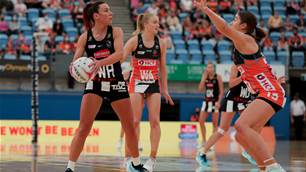
Round 2 Suncorp Super Netball Pic Special
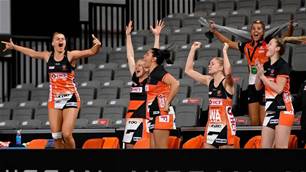
Are bigger Super Netball benches the way of the future?
